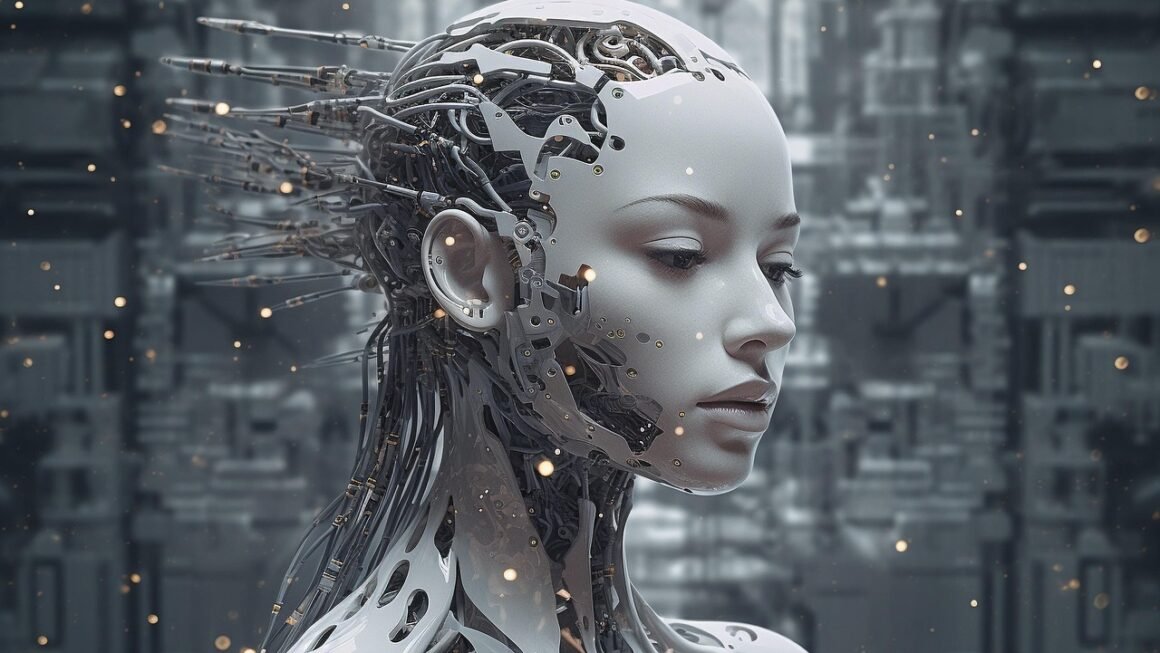Machine learning. It’s a phrase that seems to be everywhere, from powering your favorite streaming service’s recommendations to helping doctors diagnose diseases. But what exactly is machine learning, and how does it work? This blog post will break down the complex world of machine learning into digestible sections, exploring its core concepts, applications, and the future it’s shaping. Get ready to dive in and discover how machines are learning to make our lives easier and more efficient.
What is Machine Learning?
Defining Machine Learning
Machine learning (ML) is a subset of artificial intelligence (AI) that focuses on enabling computers to learn from data without being explicitly programmed. Instead of relying on pre-defined rules, machine learning algorithms use statistical techniques to identify patterns, make predictions, and improve their accuracy over time as they are exposed to more data. This allows systems to adapt and learn from new situations, offering a powerful alternative to traditional rule-based programming.
- Core Principle: Learning from data to improve performance.
- Key Difference from Traditional Programming: ML algorithms learn from data, while traditional programs follow explicit instructions.
- Relationship to AI: Machine learning is a subset of AI.
How Machine Learning Works
The process typically involves:
Types of Machine Learning
There are three main types of machine learning algorithms:
- Supervised Learning: The algorithm learns from labeled data, where the input and desired output are known. Examples include:
Classification: Predicting a category (e.g., spam detection, image recognition).
Regression: Predicting a continuous value (e.g., predicting house prices, stock prices).
- Unsupervised Learning: The algorithm learns from unlabeled data, identifying hidden patterns and structures. Examples include:
Clustering: Grouping similar data points together (e.g., customer segmentation).
Dimensionality Reduction: Reducing the number of variables while preserving important information (e.g., feature selection).
- Reinforcement Learning: The algorithm learns through trial and error, receiving rewards or penalties for its actions in an environment. Examples include:
Game Playing: Training agents to play games like chess or Go.
Robotics: Developing robots that can navigate and interact with their surroundings.
Practical Applications of Machine Learning
Healthcare
Machine learning is revolutionizing healthcare in several ways:
- Diagnosis: Assisting doctors in diagnosing diseases from medical images and patient data.
Example: Detecting cancer cells in X-rays with high accuracy.
- Drug Discovery: Accelerating the process of identifying and developing new drugs.
Example: Predicting the efficacy of drug candidates based on their molecular structure.
- Personalized Medicine: Tailoring treatment plans based on individual patient characteristics.
Example: Predicting a patient’s response to a specific medication based on their genetic makeup.
- Predictive Analytics: Forecasting patient risks and preventing hospital readmissions.
Example: Identifying patients at high risk of developing diabetes based on their lifestyle and medical history.
Finance
The financial industry is leveraging machine learning for:
- Fraud Detection: Identifying fraudulent transactions in real-time.
Example: Detecting unusual credit card activity based on spending patterns.
- Risk Management: Assessing credit risk and predicting loan defaults.
Example: Evaluating the creditworthiness of loan applicants based on their financial history.
- Algorithmic Trading: Developing automated trading strategies based on market trends.
Example: Predicting stock price movements based on historical data and news sentiment.
- Customer Service: Providing personalized customer support through chatbots.
Example: Answering customer inquiries and resolving issues through AI-powered virtual assistants.
Marketing
Machine learning is transforming marketing strategies by:
- Personalized Recommendations: Recommending products and services based on individual preferences.
Example: Suggesting movies on Netflix based on viewing history.
- Targeted Advertising: Delivering relevant ads to specific customer segments.
Example: Showing ads for hiking gear to users who have previously searched for outdoor activities.
- Customer Segmentation: Grouping customers based on their behavior and demographics.
Example: Identifying high-value customers and tailoring marketing campaigns accordingly.
- Sentiment Analysis: Understanding customer opinions and feedback from social media and reviews.
Example: Analyzing customer reviews to identify areas for product improvement.
Manufacturing
Machine learning optimizes manufacturing processes through:
- Predictive Maintenance: Predicting equipment failures and preventing downtime.
Example: Monitoring machine performance and scheduling maintenance before breakdowns occur.
- Quality Control: Detecting defects in products during the manufacturing process.
Example: Using computer vision to identify flaws in manufactured parts.
- Process Optimization: Improving efficiency and reducing waste in manufacturing operations.
* Example: Optimizing production schedules to minimize energy consumption.
- Robotics: Automating tasks and improving worker safety with robot assistance.
Key Machine Learning Algorithms
Linear Regression
- Description: A simple algorithm that models the relationship between a dependent variable and one or more independent variables by fitting a linear equation to the data.
- Use Cases: Predicting house prices, sales forecasting, and trend analysis.
- Example: Predicting the price of a house based on its size and location.
Logistic Regression
- Description: A classification algorithm that predicts the probability of a binary outcome (e.g., yes/no, true/false).
- Use Cases: Spam detection, fraud detection, and medical diagnosis.
- Example: Predicting whether an email is spam or not based on its content.
Decision Trees
- Description: A tree-like structure that represents a series of decisions and their possible outcomes.
- Use Cases: Credit risk assessment, medical diagnosis, and customer segmentation.
- Example: Determining whether to approve a loan application based on the applicant’s income and credit score.
Support Vector Machines (SVM)
- Description: A powerful algorithm that finds the optimal hyperplane to separate data points into different classes.
- Use Cases: Image recognition, text classification, and bioinformatics.
- Example: Classifying images of cats and dogs based on their visual features.
K-Nearest Neighbors (KNN)
- Description: A simple algorithm that classifies a data point based on the majority class of its k nearest neighbors.
- Use Cases: Recommendation systems, image recognition, and anomaly detection.
- Example: Recommending products to customers based on the products purchased by similar customers.
Neural Networks and Deep Learning
- Description: Inspired by the structure of the human brain, neural networks are composed of interconnected nodes (neurons) that process and transmit information. Deep learning involves neural networks with multiple layers, enabling them to learn complex patterns from data.
- Use Cases: Image recognition, natural language processing, and speech recognition.
- Example: Recognizing faces in images or understanding the meaning of text.
Challenges and Future Trends
Data Bias
- Description: Bias in training data can lead to unfair or inaccurate predictions.
- Mitigation: Ensuring diverse and representative datasets, using bias detection techniques, and implementing fairness-aware algorithms.
- Example: A facial recognition system trained primarily on images of one race may perform poorly on images of other races.
Explainability and Interpretability
- Description: Understanding how machine learning models make decisions is crucial for building trust and ensuring accountability.
- Solutions: Developing explainable AI (XAI) techniques that provide insights into model behavior, such as feature importance and decision rules.
- Example: Being able to understand why a machine learning model denied a loan application, rather than simply receiving a rejection without explanation.
Ethical Considerations
- Description: Machine learning raises ethical concerns related to privacy, security, and potential job displacement.
- Addressing Concerns: Developing ethical guidelines and regulations, promoting transparency and accountability, and investing in education and training to prepare workers for the future of work.
- Example: Ensuring that facial recognition technology is not used for mass surveillance or discriminatory purposes.
Future Trends
- Edge Computing: Deploying machine learning models on edge devices (e.g., smartphones, sensors) to enable real-time processing and reduce latency.
- Automated Machine Learning (AutoML): Automating the process of building and deploying machine learning models, making it more accessible to non-experts.
- Quantum Machine Learning: Combining quantum computing and machine learning to solve complex problems that are intractable for classical computers.
- Generative AI: Creating new data, images, and text using machine learning models, opening up possibilities for creative applications and data augmentation.
Conclusion
Machine learning is a rapidly evolving field with the potential to transform industries and improve lives in countless ways. Understanding the core concepts, applications, and challenges of machine learning is essential for navigating this technological revolution. By addressing ethical concerns, promoting transparency, and investing in education, we can harness the power of machine learning to create a more equitable and prosperous future. As you continue to learn about machine learning, consider where its principles can be applied to solve problems and create value in your own field. The possibilities are truly endless.



